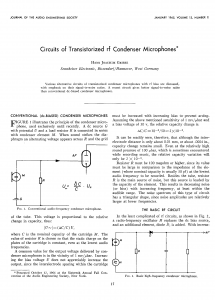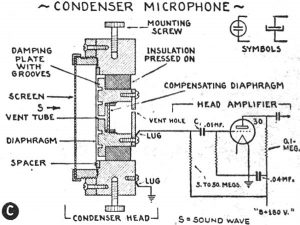RF condenser microphones, given the name “RF” because of the type of voltage which powered them, were instrumental in recording the score for A Fistful of Dollars. This technology was invented in 1924 as a tool to measure sound pressure variations, which could inform the decision of which frequency to record at. Improvements to the condenser microphone were made during the 1940s, but the microphones were not used for recording until the 1960s. (Robjohns, 2001).
Once RF mics were in use as recording tools, it was clear that there were some advantages to using this technology. RF condenser microphones are used for recording specific instruments rather than whole orchestras. (Robjohns, 2001).
As Morricone focused on the guitar, the whistle, and the whip sounds, the microphones had to be sensitive to those sounds, and produce recordings in which those sounds could be clearly distinguished above the background of light percussion and strings. (“RF-Condenser Microphones”). This recording technology allowed for some of the most important features of the score to be heard clearly to create a piece of music known for those signature guitar and whistling melodies.

This article, published in 1965, explains the circuits of an RF condenser microphone. The RF voltage is applied at the direct current source labeled G.
Images Courtesy of:
RF Cafe
Audio Engineering Society
